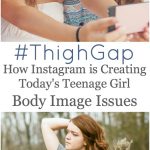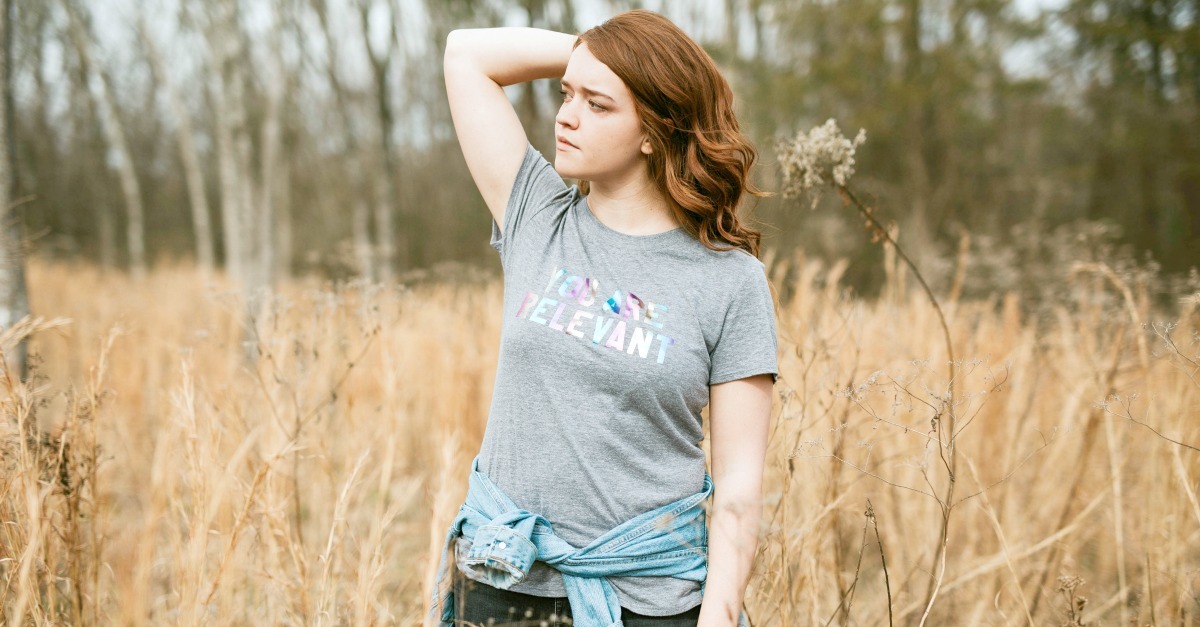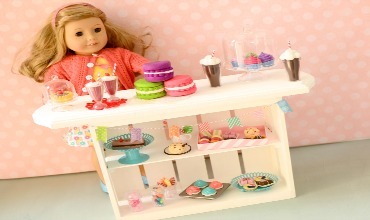Inside:Don’t know about #thighgap? It and many other IG hashtags are creating a whole new level of teenage girl body image issues
Recently on vacation, I saw two young teen girls snapping photos at the edge of the water.
At first, the pair giggled while trying to get just the right shot with the ocean in the background.
I watched them try to steady themselves in the water as waves pounded the back of their legs, the sun dancing off their bronzed shoulders.
The young girls had their hair up in perfect messy buns. Their skin was tan and glowing and each possessed strong, athletic bodies.
I wistfully admired their youth and beauty for a moment before putting my nose back in my book.
As I started to read the first words on the page, I heard “Wait, we can’t use this one because my face looks fat!”
The young girl laughed heartily afterward, so I didn’t think much of it.
Then: “Ugh. You didn’t hold the camera high enough, so my stomach is sticking out. Let’s take another.”
And then: “OK, just one more, and we’ll edit it before posting. You can see that zit on my chin.”
And finally: “Yes! We got it. Hashtag Thighap!”
By the end of the photo shoot, I was exhausted for them.
Instagram is a powerful place for young people.
Posting a photograph can elicit a vast array of emotions for the viewer and subject.
It is a place where you can highlight your best assets or get ridiculed for exposing your vulnerabilities.
It can make our teens stand out or cause them to scrutinize themselves in ways they otherwise wouldn’t.
Yes, in some instances, it can empower a young girl by giving her a platform to bravely demonstrate she has body confidence.
But in most cases, it only serves to add to our cultural epidemic of teenage girl body image issues.
This is because IG has turned into a place for users to start trends about body types, both positive and negative.
While on some level, body type trends have always existed, social media has made it pervasive and create a hyperawareness for our teenage girls.
For past generations, it was Twiggy in the 1960’s, whose shapeless body was everywhere. In the 80s, it was the healthier shape of Cindy Crawford. The year 2000 ushered in ultra-thin models like Kate Moss.
And then Kim Kardashian’s derriere hit social media and young girls began asking for butt implants.
As a society, we’ve recognized that the bodies we see on the covers of magazines often are photoshopped or manipulated by lighting or fancy camera angles; but, what happens when tweens and teens go on Instagram and see their peers hashtagging unattainable body types?
There’s the popular #thighgap, which highlights the space between your legs to demonstrate how thin you are or the #collarbonechallenge, where people place coins on the indentation of their collarbones to highlight their thinness.
On the opposite side of the spectrum, Instagrammers have highlighted more healthy, body-positive hashtags, such as #mermaidthighs, which combats the often unattainable #thighgap for most young girls or #HonorMyCurves, which celebrates curvy, plus-size women.
While I love the premise that every body is beautiful, why is our body shape a trend at all?
Here’s the thing: hashtagging body types, even when it’s done in what we think is a positive way, isn’t healthy and it’s hurting our girls.
Body confidence is not about identifying with a current shape du jour.
It comes from within.
It’s appreciating you are more than your appearance and feeling comfortable in your skin.
Every time — the media, retailers, consumers, and tweens and teens on Instagram — focus on a new body type as a “trend,” it tells millions of girls that their body is “wrong.”
It doesn’t matter if is portrayed as “positive” (such as a Kardashian large bottom) or as “attainable” (such as an eight-pack set of abs) or as “healthy” (such as plus-size models.)
If our tween and teen girls are continuously immersing themselves in photos believing their body should look a way that it never will, they will have a hard time loving the way they look right now.
In fact, they’ll have a hard time loving themselves at all.
Improving Teenage Girl Body Image Issues Means Teaching Them To Look Beyond The Hashtags
I want sources of body confidence inspiration for my daughters (and even for myself).
But that starts, when we intervene and get our girls to stop using the shape of their bodies as trends.
Because the truth is, body confidence never goes out of style, even though body types do.
We need less posed photos geared towards perfection and more candid pictures of satisfaction;
fewer hashtags about #bodygoals and more about #beautifulhearts;
and less posts trying to force a fake norm, and more celebrating the unique.
Keep up the #lovethebodyyouhave on Instagram. Just choose your hashtags carefully.
Related:
Ten Things Every Mom Wants Her Tween Girl To Know
Seven Surefire Ways We Can Raise Strong and Confident Girls
Gifts For Teen Girls – Things They Really Want








Leave a Comment